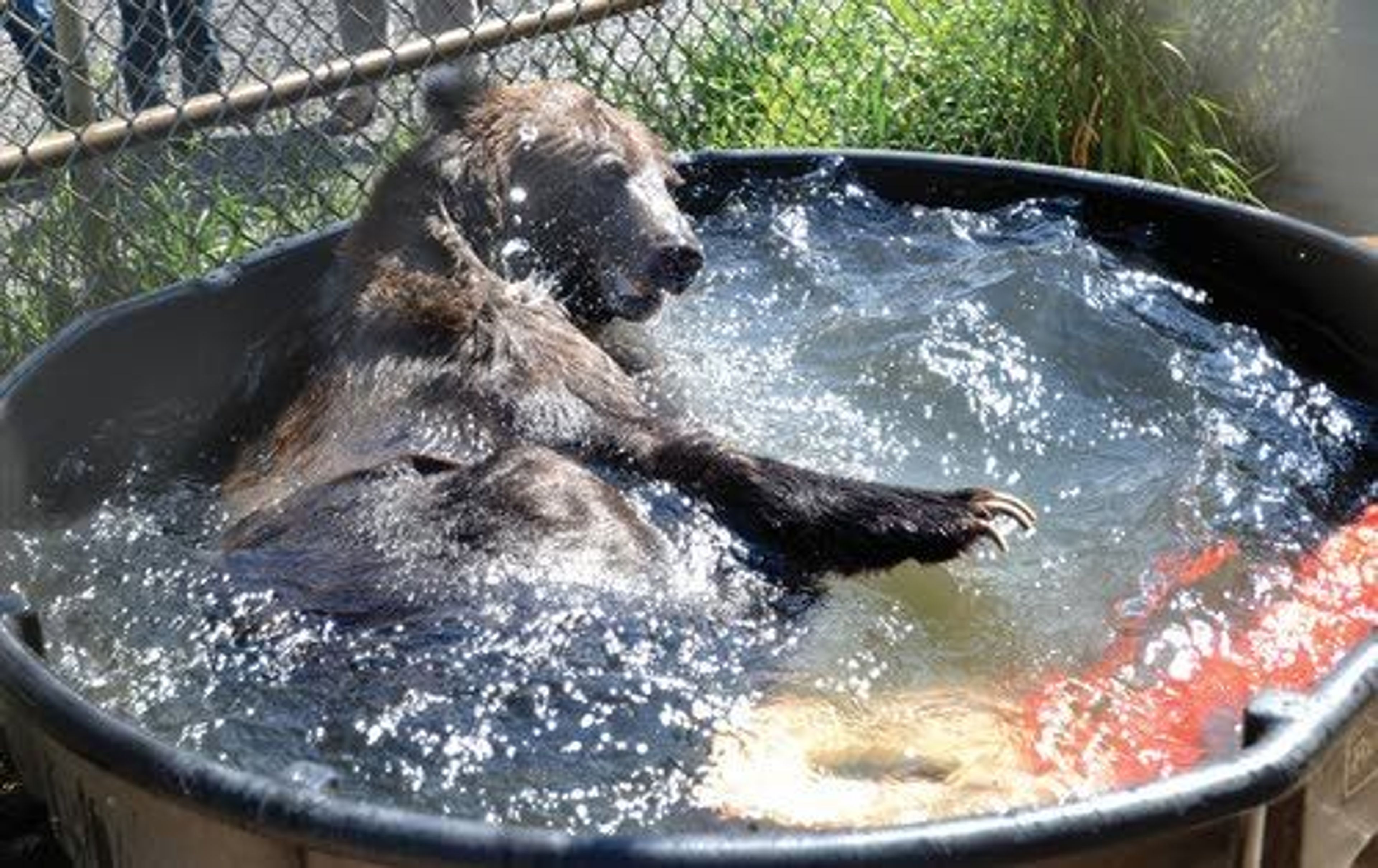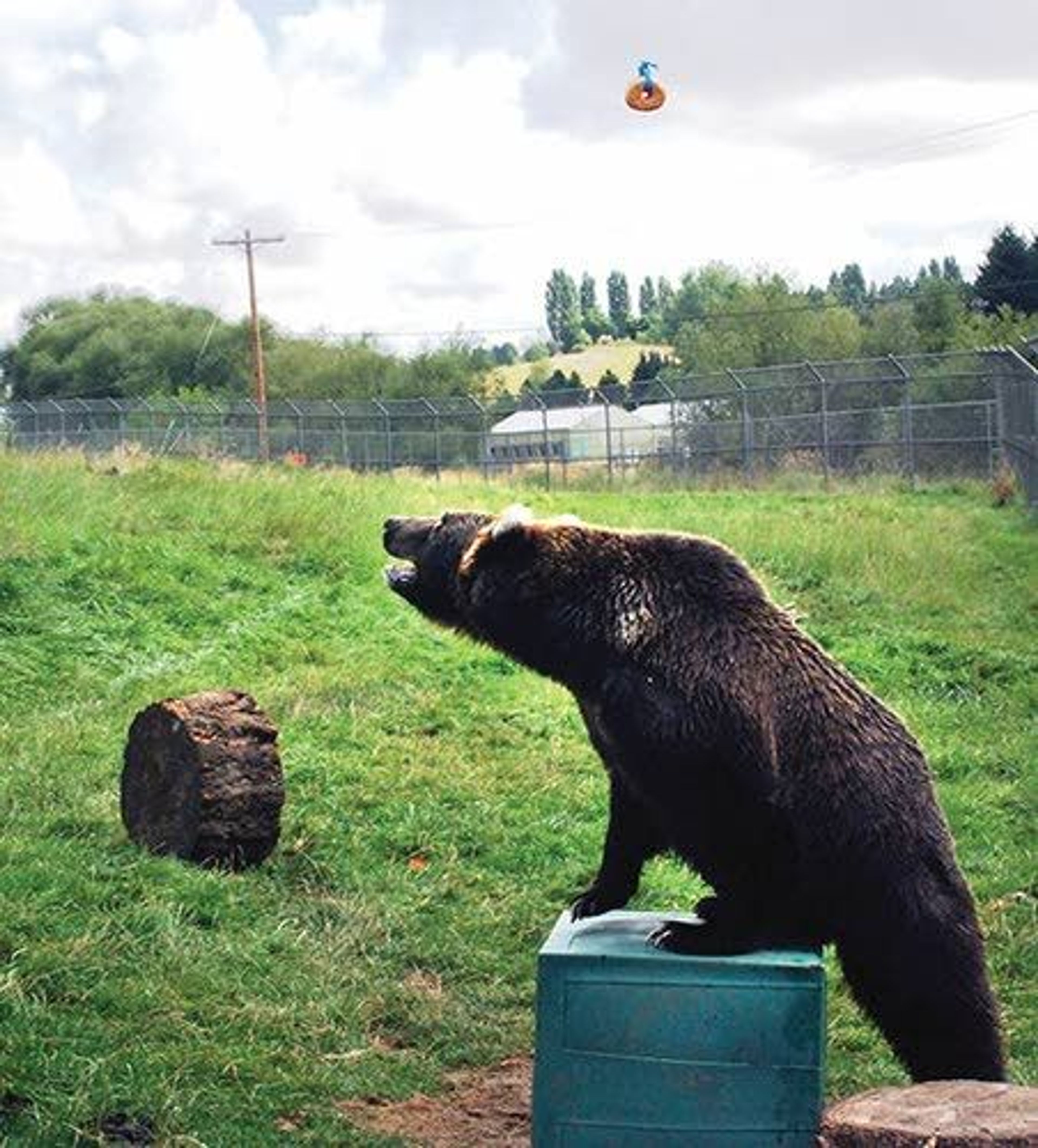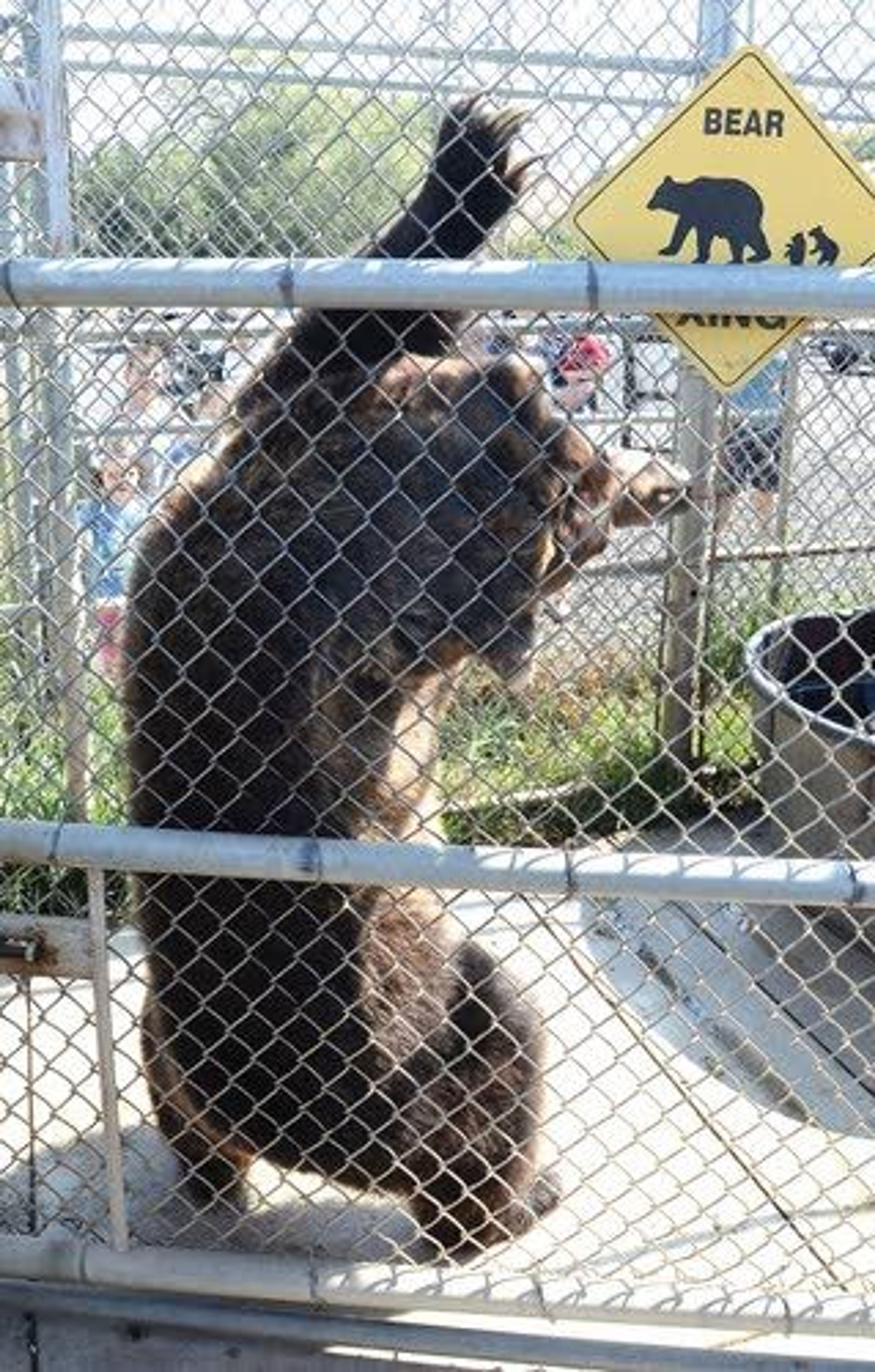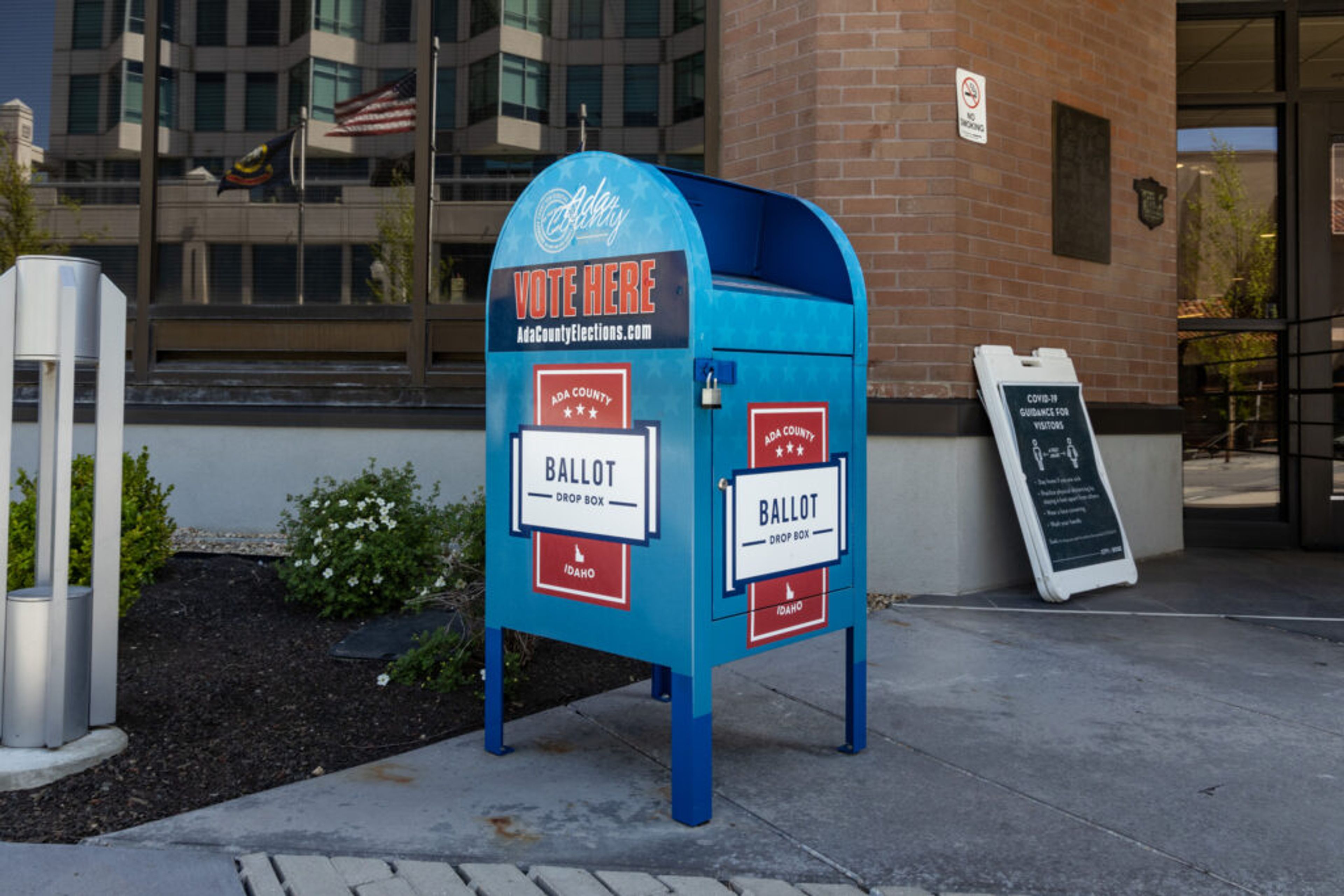At Washington State, bears learning to use tools
Give a grizzly a doughnut and she'll have a snack; give her something to stand on and she'll get her own
PULLMAN - The grizzly bears at Washington State University's Bear Research, Education and Conservation Center may be some of the best-studied bruins in the world, but they don't act like shaggy lab rats.
Instead, they're more like family dogs - really big, really smart family dogs.
They'll often stop to beg a treat or lick a staff member's hand through the chain-link fence while wandering between their pens and a 2-acre outdoor enclosure. They're also fond of the big plastic tub that serves as their bathing pool, stepping daintily into the water to cool off on hot days.
Come feeding time, though, they're all bear.
Sometimes that means brute force, as when they beat against a door, impatiently waiting for the staff to open it so they can eat their meals. But at other times they're surprisingly thoughtful, clearly appraising a situation before choosing a course of action that gets them to their goal.
"If they could read books, they might be smarter than us," joked Lynne Nelson, assistant director of the center and an associate professor at WSU's College of Veterinary Medicine.
There are currently 10 grizzlies at the center, she said, including three sub-adults and seven adults. Some were raised from cubs, while others were wild bears that ran into conflicts with people.
Most have learned to recognize her car, since they associate it with the food she brings. Some also possess remarkable lock-picking skills - using a single claw to deftly undo a spring-loaded clip, lift a latch and then slide back a bolt to open a door.
And in a groundbreaking new study this summer, several of the bears demonstrated an ability to use tools to get a food reward.
The three-month study, designed by veterinary student Alex Waroff, involved eight bears, each of which was tested in isolation. A doughnut was attached to a string and hung from a wire, too high for them to reach. The bears first had to learn how to stand on a sawed-off tree stump to reach the reward. Then the stump was moved aside to see if they would manipulate it back into position.
In subsequent tests, the bears were presented with a plastic box and two logs - items they didn't associate with the doughnut - to see if they would use them as well.
To date, six of the eight bears have used the available tools to reach the doughnut.
Kio, a 9-year-old female, was the quickest study. She learned to shift the stump back into position after just a few trials, and when the stump was replaced with the box and logs, she immediately began using them.
"You could see she got the idea," Waroff said. "She'd roll the log and be looking up at the doughnut to make sure she put it in the right position."
One of the most interesting results, Nelson said, was that the bears didn't all use the same item. Some used a log, some the box. Some used different items each time.
"They all have individual personalities," she said.
People who work with bears - whether captive or in the wild - typically have stories about how smart they are. However, this is one of the first academic studies that clearly shows they can manipulate items to achieve a goal.
"In the way they calculate and strategize, they can be more rational that we are," Nelson said. "For six out of eight bears to learn this on their own, without any training, in three months - that's pretty fast."
While the study offers practical benefits in terms of helping design bear-proof items, reducing bear-human conflicts and improving zoo enclosures, Waroff said it also provides insights into bear cognition.
"It helps the public understand that these 'monsters' really have a lot of things going on in their heads," he said. "And the more we learn about the world, the more we start caring."
The bear center has been helping people learn about the world for 28 years. It conducts a variety of research into bear biology, including nutritional and cardiovascular studies. While much of the work is focused on learning more about bears, Nelson said, some of it could also benefit humans.
For example, researchers are examining how bears avoid many of the problems associated with obesity, including heart disease and diabetes. They may pack on 100 pounds or more each fall, as they prepare for winter hibernation, yet they don't have heart attacks or develop insulin resistance. They also don't have problems with blood clotting or coagulation, even though their heart rate may only be five to 15 beats per minute.
The work could help researchers understand how different proteins or biological controls can be used to avoid health problems in humans.
The bears stay at the center year-round, Nelson said. During winter, the windows are open so the pens remain at ambient temperatures.
"If it's not very cold, they'll be sleeping on their sides," she said. "But when the temperature drops they'll get into a tight little roll. You can't tell their heads from their tails."
---
Spence may be contacted at bspence@lmtribune.com or (208) 791-9168.












